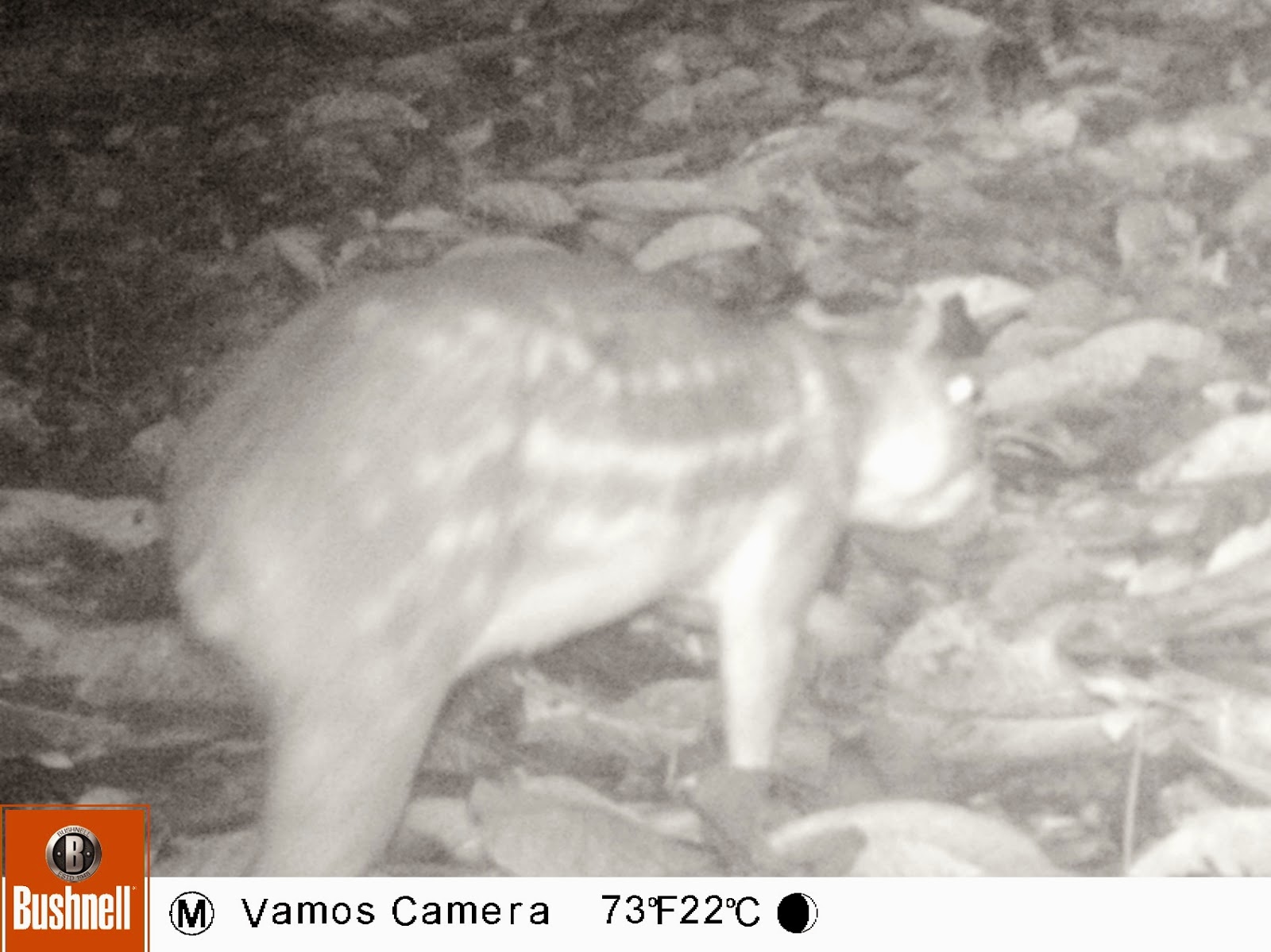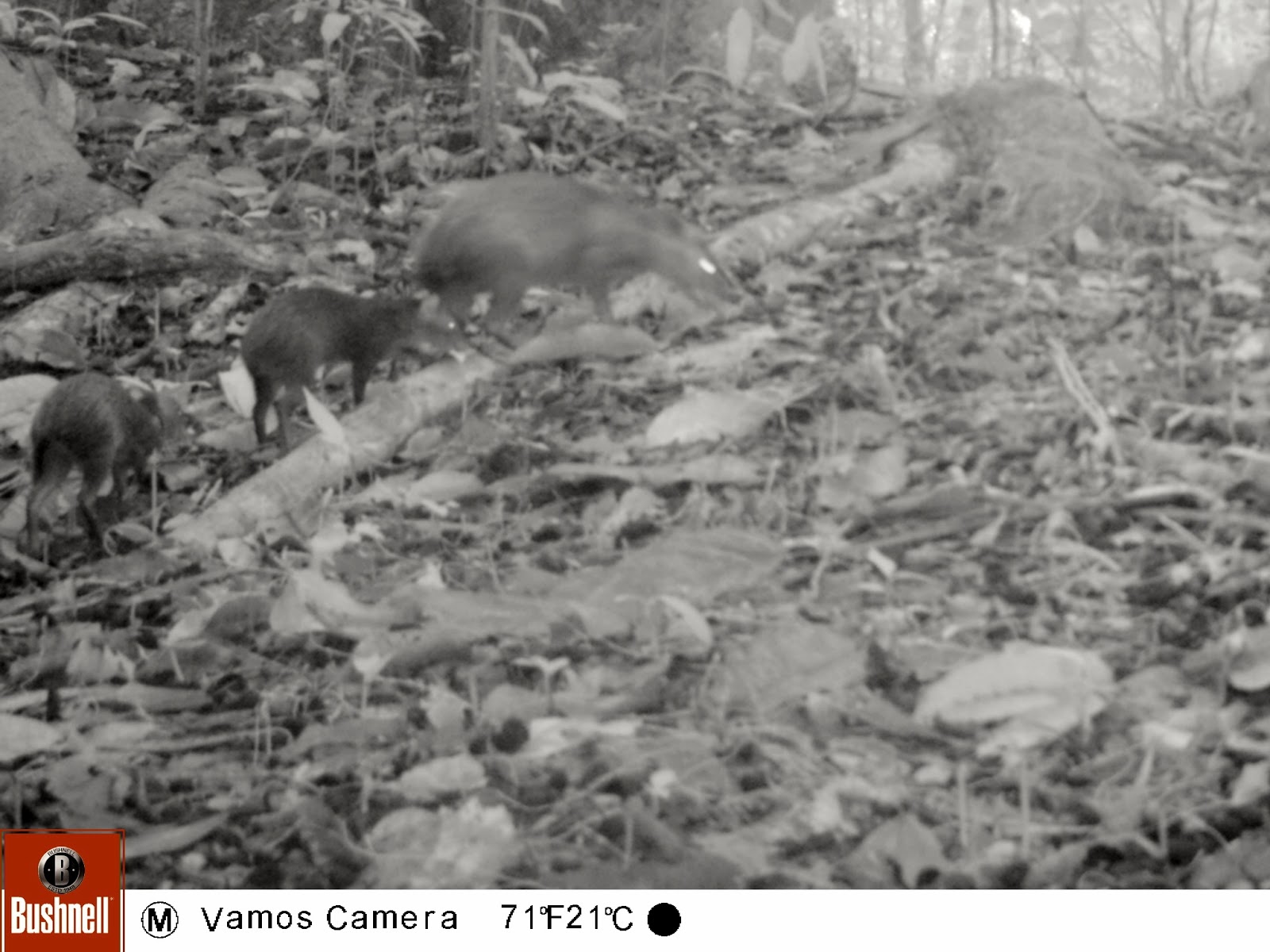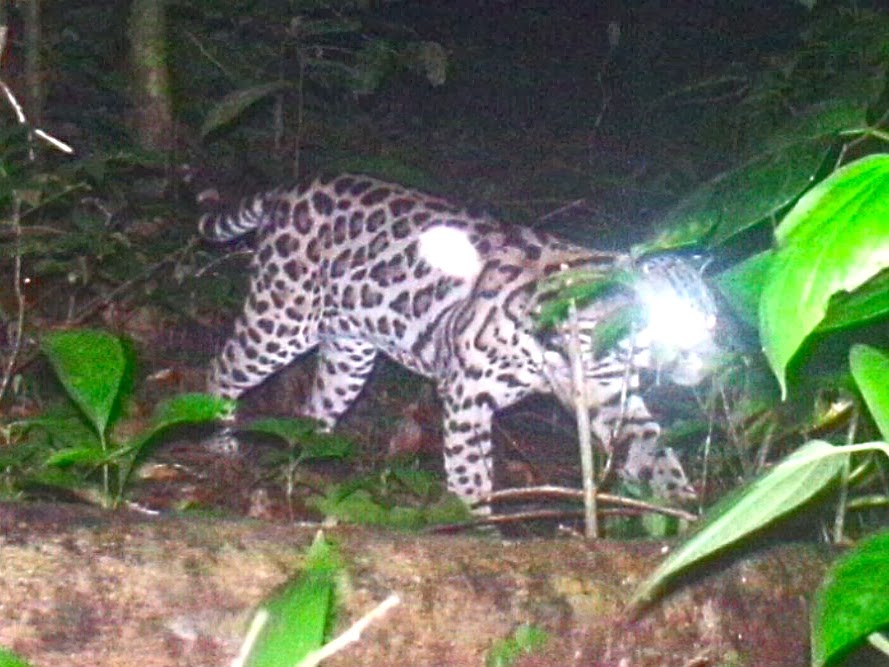 |
| The Kinkajou, an occasional visitor to out camera testing area. |
We have just returned from Costa Rica. The project is active and is continuing to produce positive results. Animal populations continue to be sustained. We even got a first real glimpse of a jaguarundi with her kitten.
 |
| A Jaguarundi kitten towers over it's mother. |
For the first time, we did not see any trespassers hunting on the land. We did see plenty of dogs, which cause chaos in the forest.
 |
| Local dog harasses an agouti within the same minute. |
Back in August HCO, the company who sells the wireless cameras that we use, offered up a contest on Facebook and we won!
 |
| We won a Camera! |
 |
| Low resolution email image of Coati. |
 |
| Better resolution of the same image downloaded from the SD card. |
In early January, I was asked by a friend to set up some cameras on an old road up on the mountain behind Golfito. The first time we checked the camera we got a male Puma image. We continued to see more of him regularly for the next three weeks. We also discovered Puma droppings or scat which were given to mammalogists from the Phoenix Zoo. This will shed light on the cat's dietary information from fur analysis.
 |
| Our cameras got a Puma only 3 miles from our property. |
As far as we know, this is the first photo evidence of a Puma seen in this vicinity in a long time. There was also a documented report and video of a Puma crossing the Coto River just South of Golfito. Our place, Ocho Verde is just 5km or 3 miles from each location.
This is important as we try to determine if we have a big cat corridor from the Golfo Dulce Rainforest Reserve into the wilder mountains of Pavones and into northwestern Panama. Cat corridors are important for genetic diversity and healthy populations. Other than a fortunate sighting, our camera traps will certainly be key in this determination.
 |
| This seems like a logical path for big cats |
 |
| No brand was spared from the rain damage. |
See you soon --Thanks--Frank
If you have stuck around this long...here is funny video from our cameras!
In the enire six weeks we were there, we saw 2 snakes and no fer-de-lances!






































































